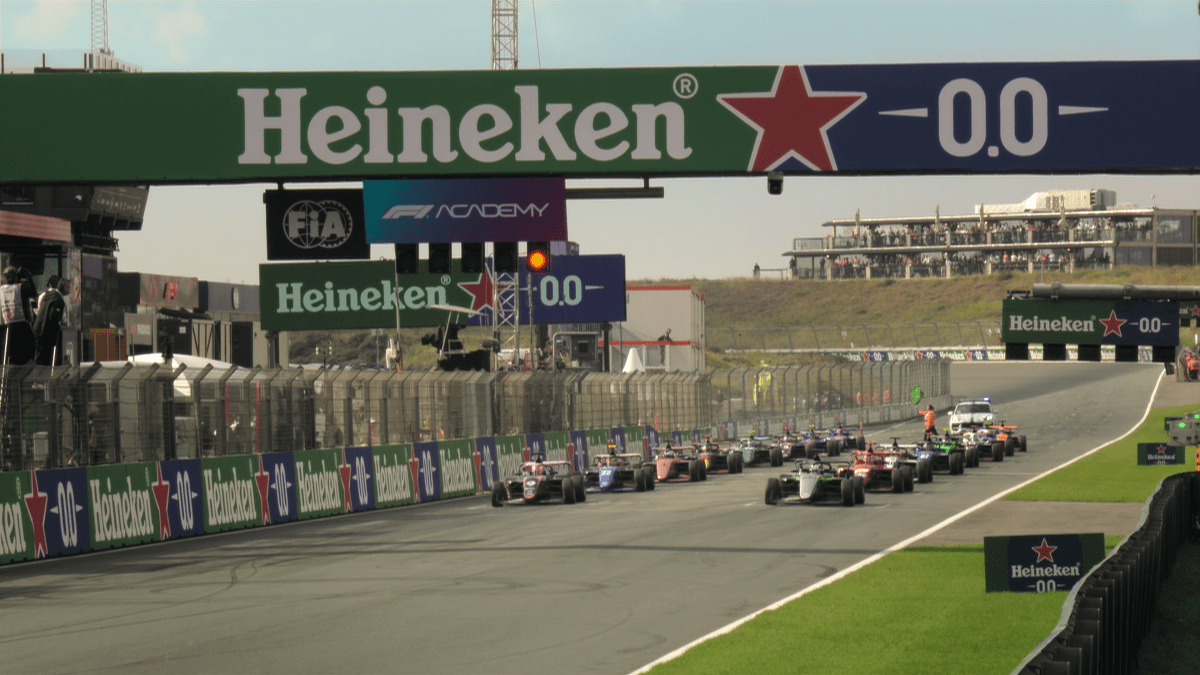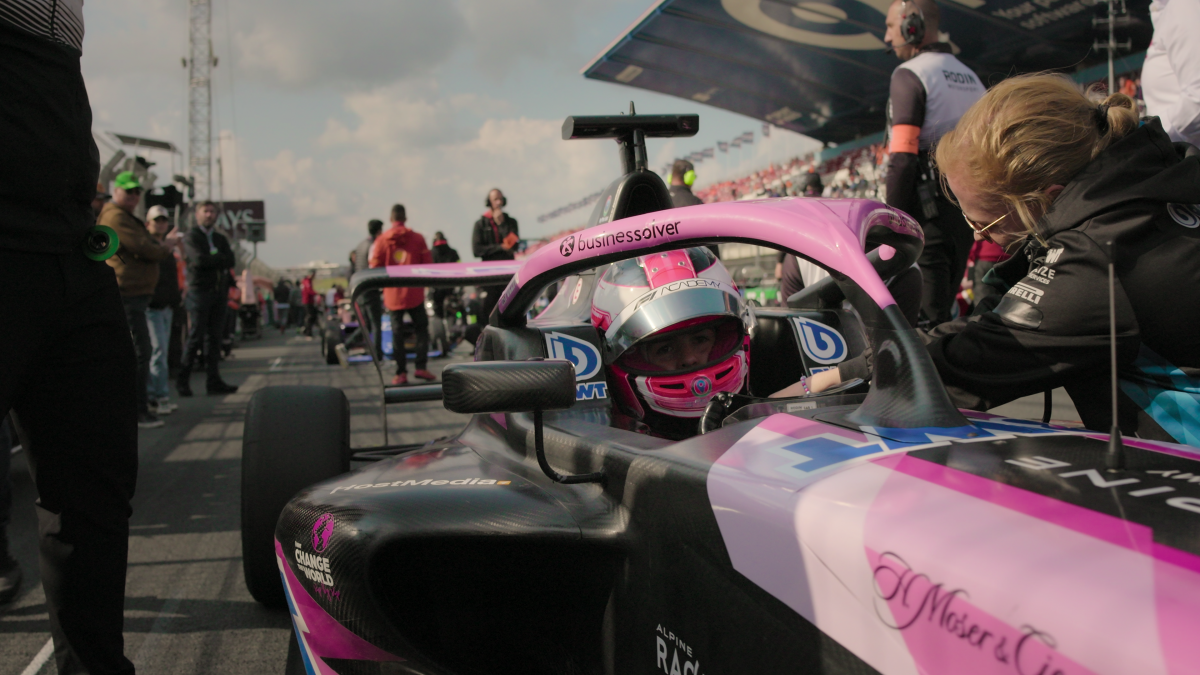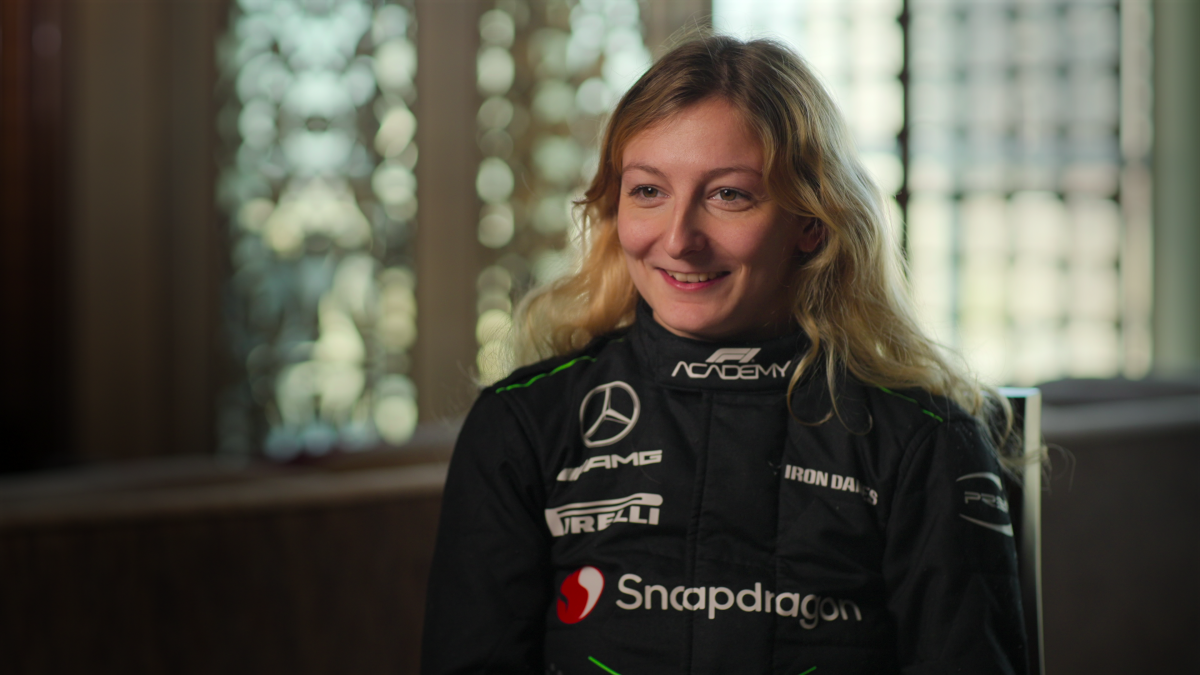When Netflix spotlights a subject, it’s almost guaranteed that the world will watch.
The streaming service has been the driver of many cultural talking points, and its latest docuseries, F1: The Academy, showcases a gear shift in the narrative for women in motorsport. Formula 1 has long been a male-dominated space, and the F1: Academy series, produced by Reese Witherspoon, follows the professionals who are trying to change that.
In episode one, The Academy’s Managing Director, Susie Wolff, outlines the purpose of the championship, to develop the careers of women drivers with the ultimate goal of getting an Academy driver on the Formula 1 grid. Drivers can compete for a maximum of two race seasons, with the winner of each season earning a fully funded seat in the GB 3 championship, taking them one step closer to that goal.
It’s a high-pressure environment, and with established teams such as Mercedes, Red Bull and Ferrari backing talent, it speaks volumes about how the sport is evolving. Netflix’s storytelling emphasises this significant moment.
Unlike Formula 1, the F1 Academy is a Spec Series, meaning all the cars are identical and built to the same specifications. Each car is based on the Formula 4 model. It’s a high-performance design that puts the focus on the driver’s ability, rather than technical advantages. Whilst the cars are identical in structure, small adjustments can still be made to better suit each driver’s personal preferences.
Inside the tech shaping the future of women in motorsport
This may come as a surprise, but according to experts, the F1 Academy cars don’t need major redesigns to support female drivers. One person who knows the car’s adaptability firsthand is Prema engineer Simone Bechini. He works closely with Doriane Pin, one of the standout drivers spotlighted in the Netflix series.
“Formula 4 did a decent job to get the car ready to fit any kind of driver in the Academy, even for Doriane, who is one of the lightest in the paddock,” explains Bechini. “Not much was required to accommodate for female drivers, as everything was already possible with a normal Formula 4 car.”
While the cars needed no major changes, small driver specific adjustments can have a significant impact on the drivers’ performance. To help ensure better support and control in the car, the seat is custom fit for every driver. While this is standard practice across most motorsport series’, engineers working with women drivers pay closer attention to factors like hip width and pelvic structure.
Made from polyurethane foam, the seat moulds to match the size and dimensions of each driver’s body shape. “This is a key step. Once the seat is tightened, it doesn’t move at all. It’s essentially locked in,” Bechini shares.
Prema racing
From a safety and practical perspective, a loose fit can cause problems. If the driver’s body is moving, they’ll feel the movement of their torso rather than the movement of the car. A tight secured seat protects drivers in crashes or during any sudden stops as it prevents the drivers from sliding.
The position of the steering wheel can be adjusted for every driver to help them sit in a more natural position. This can reduce driver fatigue and can make the car easier to control. But one key step in getting an F1 Academy car race ready is very straightforward. It is simply just adjusting the pedals.
Generally, F1 drivers are shorter than the average male, and when it comes to the F1 Academy, many women drivers will have shorter legs so this is accommodated for. In formula racing, the car seat can’t move forward and backwards, so pedal box adjustments are pivotal for comfort when the drivers are accelerating and braking. According to Bechini, “adjusting the pedals to match the driver’s height is key.”
Unsurprisingly, seat belts in F1 Academy cars have a few adjustable positions to allow vertical movement to prevent the driver’s body from shifting. This is especially important when braking heavily, the engineer explains. The shoulder straps help to provide stability. Drivers have to put a lot of effort and strength onto the braking pedal, Bechini shares. “Loose belts don’t just impact control, but lead to performance issues too.”

Courtesy of Netflix
F1 vs F1 Academy: Comparing the cars
And what are the key differences between the two championships?
“F1 cars are more powerful than the Academy and F4. The aerodynamic difference is huge,” Bechini comments. The engineer adds that the cars used in the Academy are “the entry level for single seater cars, which means the downforce level is adjusted at a lower level.” This is a force that pushes the car down onto the track that essentially helps the tyres to grip better, so the car can go faster around corners.
Although both championships share Pirelli tyres, there are key differences. F1 cars are much larger in comparison, providing more grip and strength meaning they can reach faster speeds. Still, Bechini points out that the overall ergonomics, driver positioning and general approach is similar across the two series. “In both championships, drivers are all sitting as low as possible, the body is well inclined, and there are the same FIA (the governing body for motorsport) regulations,” he explains.
Bechini also notes that the FIA has made recent changes aimed at improving inclusivity. “The steering effort required to rotate the wheel has been modified recently by the FIA to make it more suitable for female drivers and to make it more even across the ladder,” he shares.

Courtesy of Netflix
Getting the cars race track ready
With the F1 Academy being a Spec Series, how the team and drivers get their cars race track ready can be the difference between winning and losing. In Netflix’s docuseries, Bechini’s driver, Doriane Pin, is driven and determined. Alongside 14 other athletes, she vies for that top spot. Doriane finishes overall second, with the documentary highlighting GB’s Abbi Pulling as her main competition.
Bechini tells us “prep is not happening at the track, it happens way before. Cars and material travel from one race to the other, so one day is often dedicated to fully rebuilding the cars.”
Describing the ethos at Prema racing, Bechini describes how the team and their drivers have multiple meetings before each event. Here they introduce the different race tracks characteristics through data and videos collected from previous years. “We have our own simulator, and it’s standard procedure to have a simulator session with all the team drivers. They’ll drive a few laps and as a team, we can get them as ready as possible to do their thing,” come race day.
The F1 Academy is working with limited track time. Often racing on the same weekends as its F1 and F2 counterparts, the track is shared. Bechini says that this makes preparation even more important. “You need to be very ready from the beginning. We dedicate quite a lot of effort towards that.”

Courtesy of Netflix
Planning is particularly crucial as unlike other racing championships, the cars in the Academy rarely ever go back to the workshop to be stripped down and inspected, but travel directly to the next event. This makes checklists even more important.
Bechini illustrates that as soon as the team arrive at the next race, the car is rebuilt. This includes routine checks, downloading performance data, and inspecting to see if any work is needed on the car. The team also monitor their drivers’ mileage.
“The first part is rebuilding the car, the second step is setting up the car. These are important steps as it allows us to adjust to adapt to the characteristics of each track.” These adjustments can include changing the angle of the wheel, springs and the front wing and back wing, which gives the tyres more grip. Technical checks need to be carried out too, including being weighed, so the car can be cleared to take part in a race.
Even with all these rigid steps in place, things don’t always go according to plan. Throughout the Netflix series, we see Bechini’s driver, Doriane Pin, face some challenges and narrowly miss out on the top spot on the podium. “Failures happen, they are a part of racing and sometimes you just have to accept them,” Bechini openly shares. However, as it stands Pin is just one point off the top of the table and is closing in on that coveted first place.
For Bechini, it’s incredibly rewarding to work with Pin. Motorsport has always been a very male-oriented and exclusive environment, “the Academy is much more balanced. It’s an interesting challenge for me to help these drivers find their path in motorsport. Getting them into Formula 1 is the ultimate Goal,” Bechini says proudly.
F1: The Academy is streaming now on Netflix
Related articles
































